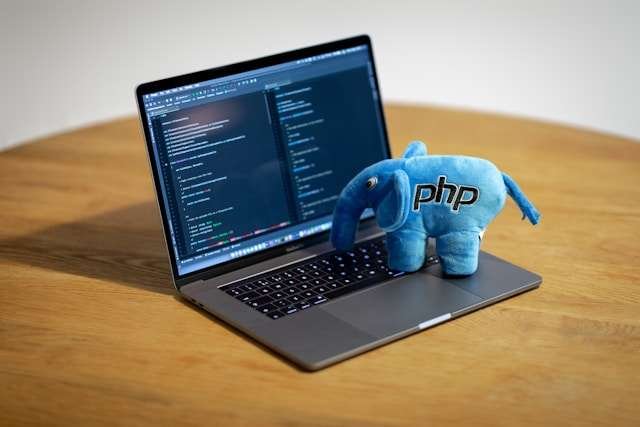
With this series of article I want to introduce you to one of the most used languages of these days: PHP.
- Introduction
- What is PHP
- What PHP can do
- Where can be used
- Getting Started
- Docker environment setup
- Your first PHP script
- Other articles of the same series
Introduction
Welcome to Learning PHP – Introduction! This is the first of a series of articles that is introducing you to one of the most used languages of these days: PHP.
Believe it or not as of January 2022 W3Techs reports that “PHP is used by 78% of all the websites whose server-side programming language we know (https://w3techs.com/technologies/details/pl-php). Some of the websites that uses PHP includes Facebook, Wikipedia, Instagram, Slack, Opensea…and so on. There are infinite articles on why PHP is still so important, but in general because: it’s widely used, it’s easy to learn and use, it’s free, there is a big community behind and has a great documentation, and, more important, is still being required if you are looking for a job as Web Developer.
What is PHP
PHP is a scripting language, and by “scripting language” is meant that is a language that is interpreted at run-time rather than compiled. This means that you will write your lines of code into your .php file and when is being invoked for the execution an interpreter will load the file, will parse, convert into something that the computer can understand and execute.
What PHP can do
Technically with PHP you can do anything and there are three main areas where PHP is being used (https://www.php.net/manual/en/intro-whatcando.php) :
- Server side scripting
- Command line scripts or tools
- Desktop apps
Where can be used
PHP can be used on all the major OS and web servers. You can find all the version you want here (if you have Windows, make sure you look for the “Windows downloads”)https://www.php.net/downloads
Getting Started
For our learning lessons (at least for big part of them) we are going to use a simple Dockerfile , but if you have it accessible on your computer even better, just skip the following steps.
Docker environment setup
For using your Dockerfile you must have docker installed (just in case you missed):
Create a folder on your computer and create a file in it called Dockerfile, and add the content below, i.e. you can create the Docker file in /user/work/learning-php
from phpOnce this step is done, run this command from the folder in which that file is
docker build -t learning-php .This operation will take one minute or two and as end result you will have your docker image with php running on it. Now we will make it run using that folder as our base folder mounted in the docker image.
What we have to do is to create a new folder “examples” in the /user/work/learning-php folder (just in case run this command
mkdir -p /user/work/learning-php/examplesAt this stage our directory should look something like
learning-php/
-- Dockerfile
-- examples/So far nothing extremely complex.
Now what we can do is to create another file (lesson-01.php) in examples/
touch /user/work/learning-php/examples/lesson-01.phpNow run this magic command
docker run -it -v /user/work/learning-php/examples/:/home --name learning_container learning-php /bin/bashWhat this command will do is to instantiate a new container called “learning-php” and link the /home container folder to your /user/work/learning-php/examples (mount operation). In this way you can edit files in the examples/ folder and this will be automatically reflected in the container. All you need to do is to access to the container shell for executing the php script and check the output. Everything is now ready for executing our first PHP script.
Your first PHP script
In the examples/ folder create lesson-01.php with this content and save:
<?php
# lessson-01.php
echo "Hello World!\n";
?>Where:
- <?php is the opening tag
- # lesson-01.php is a comment
- echo “Hello World!\n”; is an instruction that is telling to echo
- ?> is the closing tag
To execute this script all we have to do is to run this command
php lesson-01.phpthat will produce (guess a bit)
root@e3421893ae4a:/home# php lesson-01.php
Hello World!This is the end of this introduction, next we are going through other topics that will give you a initial understanding of the basic constructs the PHP language has to offer
Other articles of the same series
If you really like this series of articles, please share and help us to grow.

